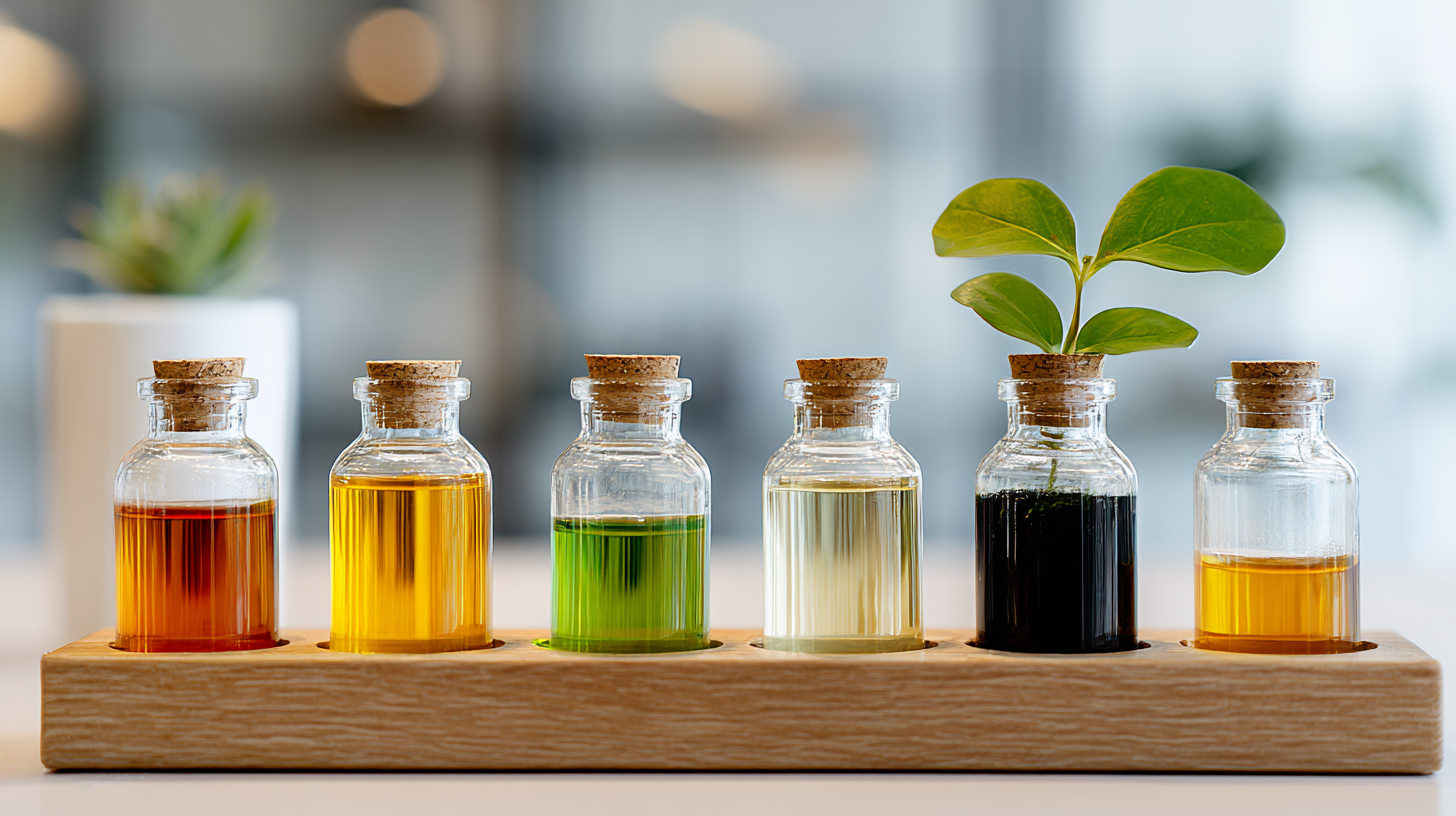

The fragrance industry is undergoing a transformative evolution, driven by shifting consumer preferences and innovative aroma ingredients. As highlighted in recent market reports, the global fragrance market is projected to reach $92 billion by 2025, with a significant emphasis on sustainability and natural components. According to Euromonitor, consumers are increasingly drawn to products that resonate with personal values, reflecting a trend towards transparency and authenticity in scent choices. This shift has led brands to explore unique aroma ingredients that not only evoke emotional connections but also adhere to eco-conscious practices.

In this landscape, understanding the pivotal aroma ingredients shaping 2023 trends is essential for industry stakeholders aiming to stay ahead. With a focus on these innovative components, companies can effectively cater to the evolving desires of today's fragrance consumers, ensuring both relevance and growth in a competitive marketplace.
The fragrance industry is witnessing a significant shift towards natural ingredients, driven by changing consumer preferences. In 2023, more individuals are seeking eco-friendly and sustainable product alternatives, preferring fragrances that incorporate natural components. This trend reflects a broader movement towards health-conscious choices, where consumers are increasingly aware of the potential hazards posed by synthetic chemicals in personal care products.
Moreover, brands are responding to this demand by expanding their portfolios to include natural fragrance alternatives. A notable growth area lies in refillable deodorants, predicted to grow at a remarkable CAGR of 11.6% from 2025 to 2035, indicating a strong market inclination towards more sustainable options.
**Tip:** When shopping for fragrances, look for products labeled with natural or organic ingredients to ensure you are choosing options that align with eco-friendly practices. Additionally, consider supporting brands that prioritize sustainability in their production processes. Exploring local artisans who create handcrafted fragrances can also provide unique and environmentally conscious choices tailored to your personal preferences.
In the rapidly evolving fragrance industry, consumers are increasingly motivated by ethical considerations when choosing their scents. Sustainable sourcing has become a pivotal factor, as brands strive to create fragrances that not only captivate the senses but also respect the environment. This shift toward sustainability reflects a broader trend where consumers favor products that align with their values, making ethical aroma sourcing essential for modern fragrance innovation.
To incorporate sustainable options into your fragrance routine, consider seeking brands that prioritize eco-friendly practices. Look for certifications indicating responsible sourcing, such as Fair Trade or organic labels, which can ensure that the ingredients are harvested without harming the environment or local communities.
Additionally, explore niche brands that specialize in unique, ethically sourced ingredients, allowing you to discover distinctive scents while supporting sustainable practices.
Another tip is to educate yourself about the ingredients listed in your favorite fragrances. Research where and how these components are sourced, as transparency in the supply chain is a hallmark of ethical brands. By making informed choices about the fragrances you wear, you can play a part in promoting sustainability within the industry, influencing manufacturers to prioritize eco-conscious practices as they respond to consumer demands.
The fragrance industry is witnessing a transformative era as innovative aroma combinations enhance scent profiles across various product applications. With the solid perfume market projected to grow from USD 1.54 billion in 2025 to USD 2.77 billion by 2032, at a compound annual growth rate of 8.74%, it’s clear that consumer preferences are shifting towards more personalized and diverse scent experiences. Brands are increasingly focusing on ingredient transparency and the well-being of consumers, driving the demand for fragrances that align with lifestyle choices and environmental consciousness.
Artificial intelligence is emerging as a pivotal tool in fragrance innovation, enabling the development of hyper-personalized scents that cater to individual preferences. This technological integration prompts a re-evaluation of traditional perfumery, as AI algorithms analyze consumer data and scent profiles to create tailored fragrances. Moreover, the impact of aroma compounds extends beyond personal care; the role of volatiles in food products is crucial in determining quality and flavor perception, further bridging the connection between scent and consumer satisfaction. As the fragrance landscape evolves, the synergy between innovative aroma combinations and technological advancements will shape the future of scent creation and consumption.

In the competitive fragrance market, online reviews increasingly shape consumer choices, especially for alternative scents. According to a recent report by Nielsen, around 84% of consumers trust online reviews as much as personal recommendations. This trend highlights the power of social proof in the fragrance industry, where even niche aromas can gain popularity through positive consumer feedback. With the rise of platforms like Fragrantica, fragrance enthusiasts share detailed insights and experiences that influence buying decisions.
To harness the influence of online reviews, brands should encourage satisfied customers to leave testimonials and ratings. Engaging with consumers on review platforms not only builds community but also fosters trust. Brands can also leverage user-generated content on social media to showcase authentic reviews, demonstrating that they value customer opinions.
Another effective strategy is to utilize influencer partnerships. Collaborating with fragrance experts and lifestyle bloggers can amplify brand visibility and credibility. Research from Mintel indicates that 38% of consumers are more likely to try a new fragrance if recommended by an influencer. By strategically positioning products within these trusted narratives, brands can tap into new consumer segments looking for credible fragrance alternatives.
This chart shows the popularity of key aroma ingredients driving fragrance innovation and consumer preference in 2023. Each ingredient is represented by its percentage of popularity among consumers, highlighting the trends in fragrance selections influenced by online reviews.
The fragrance industry is experiencing a significant transformation with a focus on personalization, leading to an enriched consumer experience. As preferences evolve, the demand for customized scents has surged, evident in the growing popularity of boutique-style fragrance shops. These stores offer unique and tailored fragrance experiences that resonate with individual tastes, marking a shift from traditional retail approaches to more personalized engagements.

One noteworthy trend in this landscape is the emergence of solid perfumes, projected to grow from $1.54 billion in 2025 to $2.77 billion by 2032, manifesting a robust CAGR of 8.74%. This increase highlights consumers' desire for innovative and portable fragrance options that fit their lifestyles. Additionally, the infusion of artificial intelligence in the cologne market is set to revolutionize user interactions, with a staggering CAGR of 54.7%. Leveraging technologies such as machine learning and natural language processing, brands can better understand and predict consumer preferences, leading to more precisely tailored fragrance options that satisfy the modern consumer's quest for individuality.